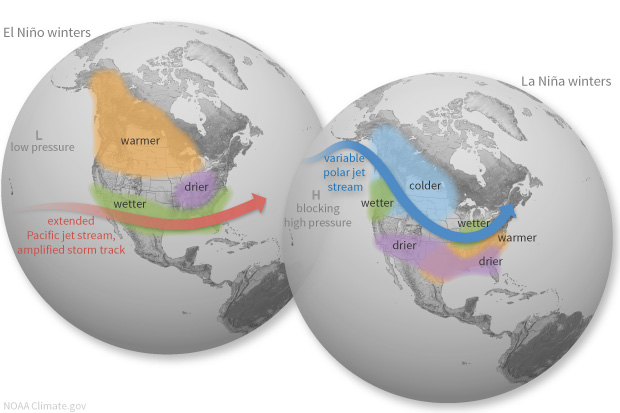
Pacific moisture will continue to bring locally heavy coastal/lower elevation rain and heavy mountain snow to the West Coast and portions of the Intermountain West through Monday. A wintry mix will create hazardous travel across the northern Plains and Upper Midwest into early Monday. Dry, gusty winds are resulting in elevated to critical fire weather in the south/central High Plains. Read More >
El Niño: A warming of the ocean surface, or above-average sea surface temperatures (SST), in the central and eastern tropical Pacific Ocean. Over Indonesia, rainfall tends to become reduced while rainfall increases over the tropical Pacific Ocean. The low-level surface winds, which normally blow from east to west along the equator (“easterly winds”), instead weaken or, in some cases, start blowing the other direction (from west to east or “westerly winds”).

https://psl.noaa.gov/map/clim/sst.anom.anim.year.htm
Northern Sierra Precipitation (8-station Index in Sacramento Basin)
Central Sierra Precipitation (5-station Index in San Joaquin Basin)
Southern Sierra Precipitation (6-station Index in Tulare Basin)
Maps
El Niño 2015/16: A Historical Perspective (NCEI)
U.S. Risk of Seasonal Extremes During ENSO (ESRL)
ENSO across NOAA
El Niño/Southern Oscillation (NCEI)
ENSO Research and Monitoring (ESRL)
Societal & ecosystem impacts